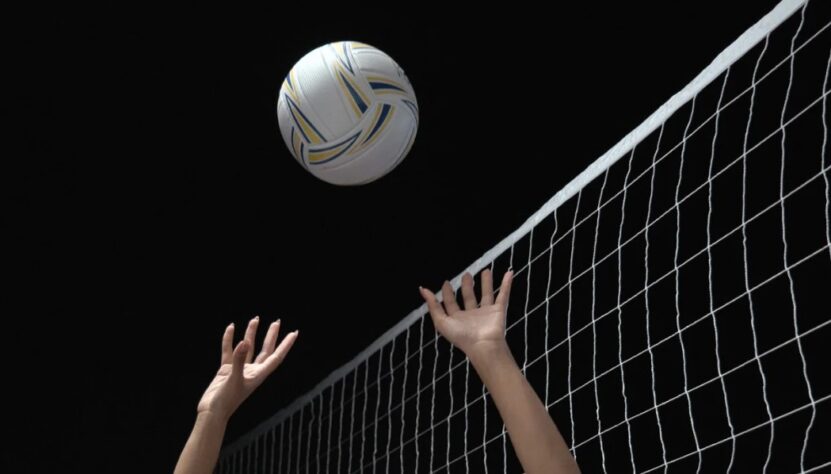Setting a volleyball is a fundamental skill in the game. It’s the technique of positioning the ball for a teammate to attack. This skill is crucial for successful team play and requires practice to master.
This guide will cover the basics of setting, common mistakes, and how to improve your skills.
Key Takeaways
- The basics of setting in volleyball include hand positioning and body alignment.
- Frequent errors like double contact, over-rotating the shoulders, and poor footwork might influence the whole game.
- Advanced setting skills include jump setting, back setting, and quick sets, and they’re crucial for higher levels of play.
- To improve your skills, try wall setting and partner setting drills. These drills are designed to enhance hand control, accuracy, and overall setting technique.
What is Setting?
Setting in volleyball is the technique of maneuvering the ball in a way that it can be hit by an attacker. It’s the second touch after the ball crosses the net and is key to orchestrating effective offensive plays. A setter must judge the ball’s speed, trajectory, and position, adapting their technique to provide the perfect set.
This role is often likened to that of a quarterback in football, as both require quick decision-making and precise execution. The setter’s ability to read the game and anticipate the movement of their teammates is crucial for a successful offense.
A good set can be the difference between a powerful spike and a missed opportunity. It involves precise ball handling, timing, and an understanding of your team’s dynamics. Effective setting creates opportunities for powerful attacks, confuses the defense, and can dictate the pace of the game.
It’s a skill that requires not only physical prowess but also mental sharpness to assess the best possible play. A setter, therefore, is often seen as the team’s playmaker, responsible for setting up plays and making strategic decisions during a match.
Essential Techniques
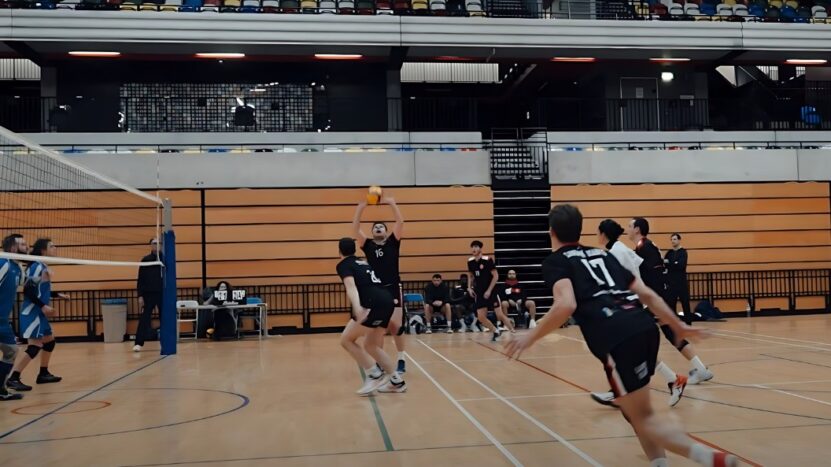
Hand Positioning and Formation
Imagine forming a triangle window with your thumbs and index fingers. Your hands should be relaxed but ready to spring into action. This position allows for greater control and reduces the chance of injury. It’s essential for guiding the ball accurately to your target.
The ball should contact your fingertips, not your palms. This ensures better control and accuracy. The fingertips offer finer adjustments and more delicate handling of the ball, which is crucial in tight situations.
Body Positioning
- Feet Placement: Keep your feet shoulder-width apart, with one foot slightly ahead of the other for balance. This stance provides stability and readiness to move in any direction. Proper foot placement is the foundation for a strong and effective set.
- Knees and Shoulders: Bend your knees slightly. Align your shoulders parallel to the net for directional accuracy. This posture not only aids in injury prevention but also ensures the power and precision of your set.
The Setting Motion
- Utilize your wrists and fingers to push the ball, not your palms. This motion provides the finesse and control needed for precise sets. Strong and flexible wrists are key to varying the speed and trajectory of the set.
- Aim to extend your arms and follow through towards your target, ensuring a smooth and precise set. This follow-through is crucial for directing the ball accurately and with the desired speed.
Advanced Techniques
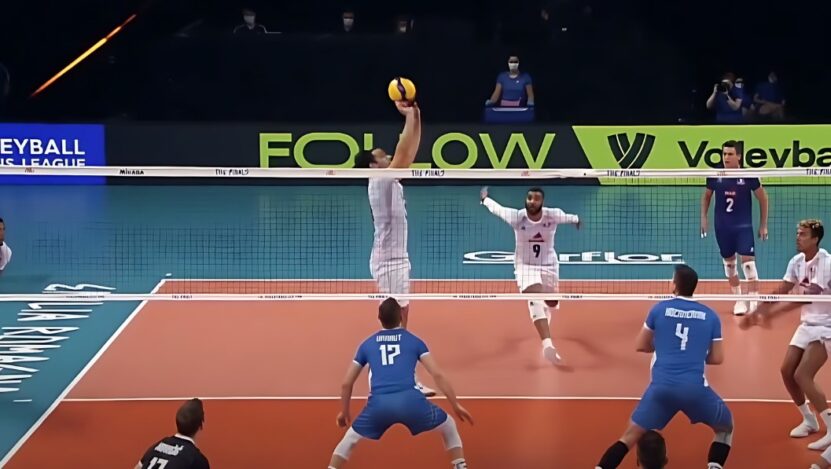
Jump Setting
Adds an element of surprise and allows for quicker sets. It requires excellent body control and spatial awareness to execute effectively. Practice timing your jump so that you contact the ball at the apex of your leap. This technique not only confuses blockers but also facilitates faster and more dynamic plays.
Back Setting
Essential for deceptive plays. Back setting can effectively misdirect the opposing team’s blockers and defense. Practice twisting your torso while maintaining hand positioning to set the ball behind you. It demands a high degree of coordination and practice to master.
Quick Sets
Involves faster, lower sets to accelerate the pace of the attack. These sets are often used to exploit gaps in the opponent’s defense. Requires excellent timing and rapport with attackers. Quick sets demand a high level of team synergy and understanding.
Common Mistakes and How to Avoid Them
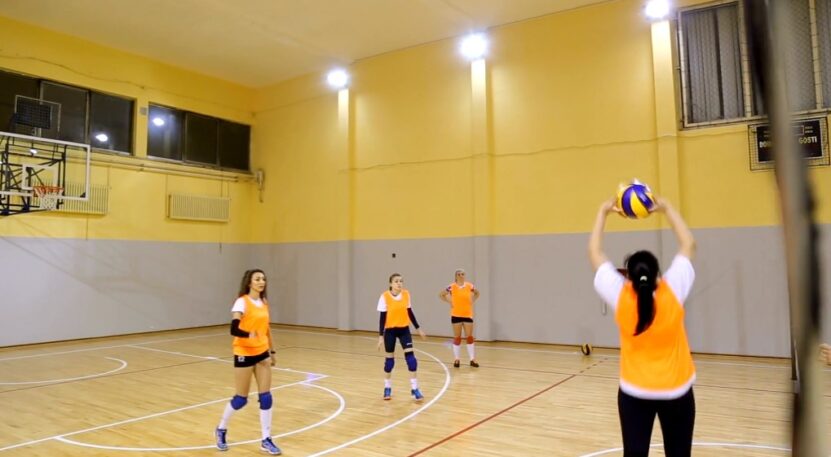
1. Double Contact
This mistake occurs when there’s uneven hand contact or improper timing during the setting motion. It often results in a lack of control over the ball’s direction and speed. Consistently practice hand placement and ensure your hands contact the ball simultaneously. This uniformity is crucial for a smooth, controlled set.
2. Over-rotating the Shoulders
Over-rotating the shoulders can lead to inaccurate sets, often sending the ball off in unintended directions. This typically happens when setters try to overcompensate for distance or power. Keep your shoulder movements compact and focused. Ensure your shoulders are aligned with your target to maintain direction and control.
3. Poor Footwork
Inadequate footwork can disrupt your balance and affect the quality of your set. It’s essential to position your feet correctly to support the rest of your setting motion. Concentrate on foot positioning and adjust them according to the trajectory of the incoming ball. Proper footwork sets the foundation for a successful set.
Drills to Improve Your Skills
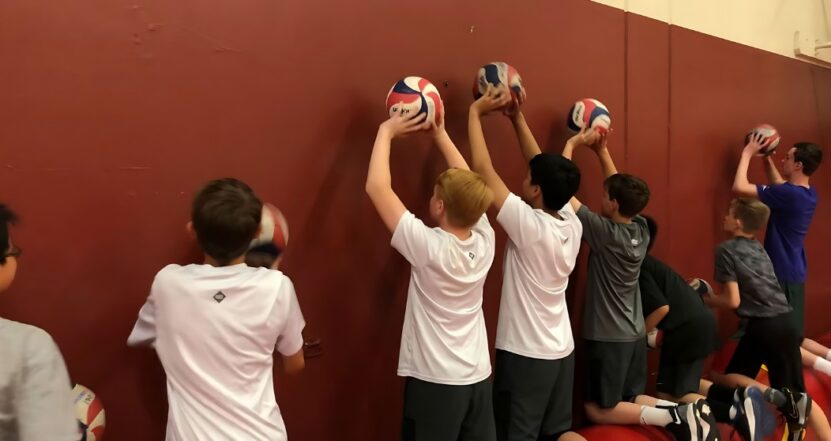
1. Wall Setting Drill
Practicing against a wall helps improve hand placement and control. This drill reinforces muscle memory for accurate setting. Start close to the wall and gradually increase your distance as your control improves. This will challenge your strength and precision.
Try different angles and heights against the wall. This variation helps simulate real-game scenarios and improves adaptability.
2. Partner Setting Drill
Alternate setting with a partner, focusing on the accuracy and consistency of your sets. This drill is crucial for developing in-game skills. Introduce variations such as jump sets and quick sets. These advanced techniques mimic game situations and improve reaction time and adaptability.
Add a target for your partner to hit after your set. This adds pressure and realism to the drill, enhancing your ability to set under game-like conditions.
FAQs
Can a libero perform a set in volleyball?
Yes, a libero can perform a set, but there are specific rules they must follow. If the libero sets the ball while behind the front-row area, any player can complete an attack hit.
However, if the libero sets the ball from the front-row area using an overhand finger pass, the ball cannot be attacked above the height of the net by any player.
How can I improve my setting accuracy in volleyball?
To improve your setting accuracy, focus on consistent practice with specific targets. Use drills that require you to set the ball to precise locations on the court. Also, work on strengthening your hand and finger muscles as well as improving your overall body balance and footwork.
Is it better to set with stiff hands or soft hands?
Generally, it’s better to set with soft hands. Soft hands allow for better control and a smoother release of the ball, which can lead to more accurate sets. However, the hands shouldn’t be too relaxed; they should be firm enough to guide the ball effectively.
How do I avoid committing a ‘lift’ violation when setting?
To avoid a lift violation, make sure your contact with the ball is quick and clean. Avoid letting the ball rest in your hands or scooping it during the set. Practice crisp and decisive contact with the ball using your fingertips.
What’s the best way to communicate with hitters as a setter?
Effective communication with hitters involves both verbal and non-verbal signals. Verbally, you can call plays or give cues. Non-verbally, you can use hand signals or eye contact to indicate your intentions.
Establishing a good rapport with your hitters during practice is key to understanding each other’s preferences and tendencies.
Can setting techniques differ based on the type of offense my team runs?
Yes, your technique might vary depending on the type of offense your team runs. For instance, a team running a quick offense might require faster, lower sets, while a team focusing on high balls might require higher, more lofted sets.
Adapting your setting style to fit your team’s offensive strategy is crucial for effective gameplay.
Final Thoughts
In conclusion, mastering the art of setting in volleyball is essential for any player. It requires practice, focus, and understanding of the game’s mechanics. By avoiding common mistakes and incorporating effective drills, you can enhance your setting skills.
Always keep in mind that a good setting is the backbone of a successful volleyball team.

